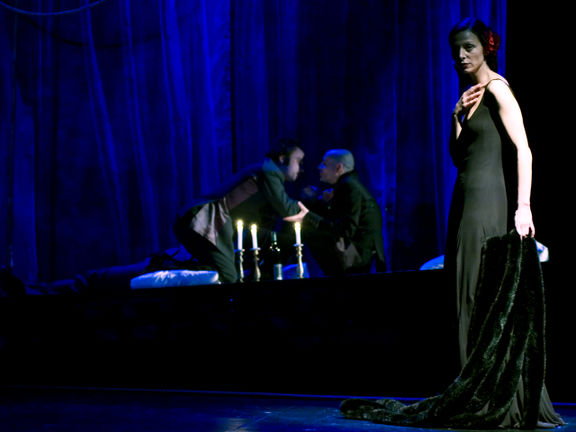Theatre Traditions and Heritage in Slovenia
Historical overview (1500–1918)
The origins of Slovenian theatre may be traced back to the folk farce of the medieval period. By the 15th century, Latin liturgical dramas were staged throughout the region. During the 16th century, under the Habsburg monarchy, a small number of Jesuit school theatre groups emerged to stage productions mainly in German and Latin, and occasionally in Slovene (Isaac's Offering, 1598; Play of Paradise, 1670; the Ruše plays, after 1680). Guest tours of German theatre troupes date in the 17th century (e.g., Insbruggerische Comödianten, 1662), the later Italian groups substitute German Volkspiel with commedia dell'arte, opera and Singspiel. The text of one popular Baroque play written by Capuchin Prior Romuald in 1721 includes around 1,000 Slovene verses, several German passages and instructions for direction. A reconstruction of this play, known as the Škofja Loka Passion Play, has been restaged intermittently since 1999 in the town of Škofja Loka. Another early piece of Slovenian theatre may be seen in the masked rite of spring known as Kurentovanje, held every February in Ptuj during the 10-day run-up up to Shrove Tuesday. Both have been installed as important elements of; with the former inscribed into UNESCO's list of Intangible Cultural Heritage in 2016.
The emergence of Enlightenment thought and the French Revolution brought new styles. In 1780 Belin is created, the first Slovenian Baroque opera play of a secular nature. In 1789, in the context of the Austro-Hungarian Empire, with the emancipation of the Slovenian language, literature and theatre creativity needed to step into the forefront. Under the influential stimulation of Baron Žiga Zois (1747–1819), the dramatist, poet, historian and cosmopolite Anton Tomaž Linhart (1756–1795) prepared the first performance in Slovenian language. It was his comedy Županova Micka, which he adapted and reworked after Die Feldmühle by the German author J. Richter (Linhart's wife appeared as Micka). Another comedy by Linhart followed, The Happy Day or Matiček is Getting Married, modelled after La folle journee ou le Mariage de Figaro by Beaumarchais. Due to the suspicion of ideological subversiveness, it was first staged in 1848 in Novo mesto by an amateur group, made up mainly of local clerks. Both works are still played in Slovenian professional and amateur theatres.
Stanovsko gledališče, the first theatre in Ljubljana, was built in 1765. For over a century, it was used almost exclusively by German and Italian drama and opera artists. In 1867, the Dramatično društvo (Dramatic Society) was formed, the (proto-)form of organised theatre activity in Slovenian language. In 1892, the German and Slovenian theatre artists alternately started to work at the newly opened Deželno gledališče, the first predecessor of the Slovenian National Theatre (its opening production being the tragedy Veronika Deseniška by Oton Župančič under the direction of the renowned actor Ignacij Borštnik). From then on, original works of Slovene authors were mediated by Dramatično društvo, while Germans were looking up to the lighter and classical repertory of Viennese theatres (Hoftheater, Burgtheater). The two parallel repertory streams did not coincide or meet but lived side by side.
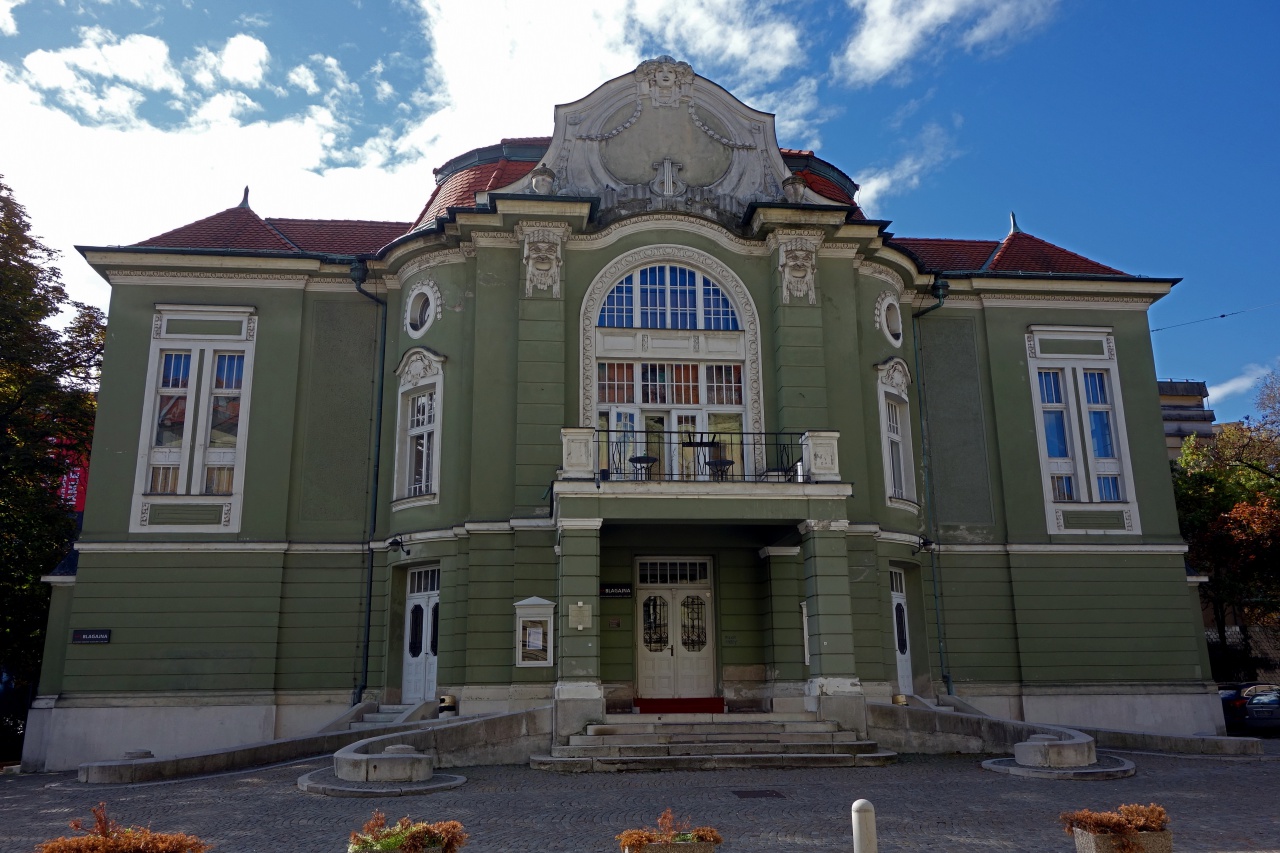 Slovene National Theatre Drama Ljubljana, main entrance, 2013
Slovene National Theatre Drama Ljubljana, main entrance, 2013
Until 1914, Slovenian theatre performances were also held in Trieste, now part of Italy, where the Stalno slovensko gledališče (Slovene Permanent Theatre) still exists today. Ivan Cankar (1876–1918) was the most eminent Slovenian playwright of the period. His unique modernist style shifted from realism to impressionism and symbolism, and his work was heavy with social, moral and political analysis and criticism. Due to Cankar's public renown, he faced constant polemical aversions.
The rise of professional Slovenian theatre between the world wars (1918–1945)
After World War I, Slovenian theatre was professionalised and began to keep pace with contemporary trends from Europe and the USA. In 1919, the Slovenian National Theatre Drama Ljubljana was opened with Tugomer by Josip Jurčič (1876), the first tragedy in Slovenian language. Just three months later, Hinko Nučič directed it as the opening performance of the Slovene National Theatre Maribor (with partly the same cast). In the process of the so-called Europeanisation of Slovenian theatre, Slovenian theatre artists, after long years of struggling for performances in their own language, were determined to reach the level of contemporary European production. They were influenced in this endeavour by the Burgtheater of Vienna and the Moscow Art Theatre. While the latter was important regarding new ideas in the art of acting and producing, the former was influential in promoting the established repertory classics. A number of significant performances happened, created by the Croatian director Branko Gavella, by Bojan Stupica and Bratko Kreft. Gavella staged a string of performances at the SNT in the 1930s that presented the proto-form of the modern theatre direction, ripe in all aspects. Stupica staged the first post-war performance (of Cankar) at the Ljubljana SNT but then continued his career in Belgrade. After his first directions in the 1930s and 1940s, Kreft's closeness to the leftist movement made him lead the Worker's Stage after 1950 where he left a long-lasting impact on modelling the issues and the structure of contemporary theatre activities.
The lively theatre activities of the National Liberation Front (that took place in years 1942–1945) consisted of many front theatre groups (at first in the form of unpretentious recitations or singing around open fire). This related to the pre-war tradition of the Worker's Stage and initiated the thought of original drama scenes and a steady group of actors. The first Agitteater started in 1942. The situation on the battlefield hindered this cultural work but soon professionally skilled actors (predominantly actors of the SNT Ljubljana) joined and the idea of a separate stage led to the act on its establishment. The Slovene National Theatre on the free territory was thus born (est. January 1944), as a unique phenomenon in the occupied European context.
Its seat was in Črnomelj (in the region of Bela Krajina) out of the urgent need to circulate the idea of national liberation, at the same time attaining the support of local inhabitants, to politically educate but also entertain them, as well as educate young colleagues of different aspects of stage work. It staged altogether eight performances, in more than 160 reprises and many occasional events and radio shows – they staged Slovenian authors (Cankar as the opening play, Linhart, one-act plays that were written from 1941 by Matej Bor, Vitomil Zupan, Mile Klopčič, Zvone Sintič, etc. – the genres of partisan drama and agitka emerged in this context), the Serbian satiric Nušić, as well as European drama plays (Molière, Chekhov, excerpts from Shakespeare). These were staged in the frame of scarce, improvised, only partly structured, but well organised possibilities inside the southern part of the battlefield in Slovenia (colourful silk costumes were sown out of parachutes used by allies!).
Vesela scena (Merry Scene) was established in Ljubljana already in 1941. In 1944, many so-called front theatre groups also emerged in various parts of the battlefield. Also, the puppetry activities of the partisan movement joined. The conceptual background of these activities was created by visible intellectuals/authors (and even a few highest political personae) was essential to avoid ideological exaggeration and bias, as well as to keep the timeless artistic value.
At the same time, the leadership of the National Theatre in Ljubljana remained unchanged while actors and directors were joined during the occupation by colleagues from Maribor. The work of some was soon prohibited and some left.
The intertwining of institutional and experimental theatre groups (1945–1969)
After World War II, many new permanent state theatres were established around the country, including professional puppet theatres in Ljubljana and Maribor – their activity was in its spirit a sort of a continuation of the dynamic Partisan theatre. The 1948 informbiro resolution marked the parting of ways between Tito's Yugoslavia and Stalin, thus also ending the influence of Russian theatre trends, particularly Soviet socialist realism, on the Slovenian theatre repertoire. The number of annually presented premieres shrunk from 15+ pre-war to 8, since the preparation and studies got more thorough and systematic. The direction of Cankar's cardinal play Hlapci (The Serfs, 1948) by Slavko Jan received international acknowledgement and was awarded upon its presentation at the festival Théâtre des Nations in Paris, 1956 – the performance presents the climax of the Slovenian theatre realism and of the ensemble play, as it was perceived at the time. Realism as the principal style on stage was increasingly met with the reproach of critics, who rejected the belated theatre repertory (Shakespeare, Ostrovski, Molière, Gribojedov) and its stylistic academism. The artistic leaders Herbert Grün, Lojze Filipič and after them Bojan Štih (in years 1951–1969) opened the SNT Drama programme to actualisation and modernisation, to the re-interpretations of classical texts through new perspectives, initiated the opening of the Small Stage (Mala drama) – this gesture was soon followed by other theatre houses as well.
The Ljubljana City Theatre (active from 1951) set the synchronicity with European drama, comical plays and new Slovene drama among vital aims of its programme and brought considerable freshness. The dramaturgical concept of the erudite Lojze Filipič (who greatly admired the strategies of Jean Vilar at Théâtre National Populaire in Paris) remained the continual basis of this theatre. Wise leaderships made the Slovene People's Theatre Celje (today, Celje City Theatre) one of the most artistically challenging state theatres in the 1970s.
Experimental and alternative theatre groups started to flourish after 1955, playing an essential part in Slovenian theatre life.
Having started her studies in Vienna before 1940, during 1955–1967, Balbina Battelino Baranovič introduced complete novelties to the Slovenian theatre approach and production (such as theatre-in-the-round, choreographed stage movement, new European drama by Beckett, Albee, Dylan Thomas). These strategies, before unimaginable, left significant traces on the professional evolution of the post-war theatre activity and initiated the gradual rise of the contemporary acting approach. (Actors who performed with experimental groups were typically also members of institution ensembles. Thus, they mediated the new acting style and enabled the spontaneous intertwining between the institutions and the experimental group activities.) In 1955, Baranovič also established the Mladinsko Theatre in order to address the young audience.
Three experimental theatre groups worked (side by side) at the domicile of the Experimental Theatre in the Knight's Hall of the Križanke Cultural Complex. Ad Hoc Theatre (Gledališče ad hoc) of Draga Ahačič brought closer the oeuvres of Sartre and Anouilh. During its seven years of existence (1957–1964), Stage 57 (Oder 57) introduced Ionesco to Slovenia and put on thirteen premières of Slovenian new drama writing, including works by Dane Zajc, Primož Kozak, Jože Javoršek, Peter Božič and Dominik Smole. Antigone (1960) by the latter still figures as one of the most prolific poetical dramas in Slovenia. Poetical drama was a specific product of Slovenian literary modernism. The main accent of Stage 57, understood as a declaration of sorts, was the verbal expression of the meaning; the meaning of the performed action was to be transferred solely in words, not through bodily movement or any other stylisation.
Experimental groups and their performances set the seed for the independent theatre scene that sprang up immediately after the shutdown of Stage 57. Dušan Jovanović (1939–2020) who later set the tone for the contemporary performative approach in Slovenian theatre first established Študentsko aktualno gledališče (ŠAG; est. 1965) and continued to stage fresh drama by Slovenian authors. An outrage among the old partisan warriors followed, when ŠAG staged Sean O'Casey's The Plough and the Stars (Plug in zvezde, 1965), since it drew a distinct parallel with the Slovenian post-war situation (two decades after WWII). However, the decisive breaking point was Pupilija, papa Pupilo pa pupilčki (1969) by Pupilija Ferkeverk Theatre (under the lead of Jovanović). The performance, which teamed up with emerging poets like M. Jesih or I. Svetina and the group of students at the Acting Academy, was soon expelled from the Knight's Hall (and turned to performing at the Student Campus in Rožna dolina) but historically left a trace.
The second wave of the experimental theatre activities followed by the establishment of Experimental theatre GLEJ (they first staged Kaspar by Peter Handke, 1970, and Saved (Rešeni) by Edward Bond, 1971, followed by the staging of Grenki sadeži pravice (Bitter Grapes of Justice) by Milan Jesih, dir. Zvone Šedlbauer, 1974. After the return from his studies with prof. Richard Schechner in New York, Lado Kralj (b. 1938) established the alternative group: Pekarna (meaning "Bakery", est. 1971) followed a stance of ritual theatre approach; its defining first performance staged Potohodec (Pathwalker, 1972) by Dane Zajc.
The generation, which highlighted the second wave of theatre experiment in Slovenia, was mostly text-based. In this period, we see the staging of the works of dramatic oeuvres of Milan Jesih, Rudi Šeligo, Emil Filipčič, Dušan Jovanović, Ivo Svetina, who were influenced by Sartre, Beckett, Anouilh, Ionesco, Albee, eastern cultures and other playwrights of the 1960s and 1970s, intertwining nihilism and existentialism, the absurd and Ludism. The evolution of the entire theatre scene was a result of the oeuvres of Appia, Artaud, Craig, Grotowski, Brook, The Living Theatre. Yet, a certain decisive surplus in creating a distinct Slovenian theatre expression stemmed from the original Slovenian cultural context.
During the 1960s and 1970s, experimental stage expression dominated the theatre scene in Slovenia and influenced the institutions as well. With the opening of its Small Stage in 1963, the central Slovenian National Theatre Drama Ljubljana indirectly, but clearly, took after the model of experimental theatres. This influence was most evident in the works of Mile Korun (b. 1928), originally an architect and set designer, e.g., his 1963–1968 directions at the Slovenian National Theatre Drama (B. Behan's Hostage, 1963; E. Albee's Who's Afraid of Virginia Woolf?, 1965; Aeschylus's Oresteia, 1968). Also, Korun's staging of Pohujšanje v dolini šentflorjanski by Ivan Cankar (Scandal in the St. Florian Valley, 1965) aroused a public scandal concerning the acceptability of the modern approach to nationally canonised literary authors. As the central mediator of theatre contemporaneity into theatre institutions, Korun is a rare example of a director whose drama theatre retained concise freshness, in complete interaction with the strength of actors, regardless of his age (up to 2011, the year of his last direction). One of Korun's defining directorial traits is his recurring attention on new takes of plays by Ivan Cankar, of Slovenian plays as such and the ones by F. M. Dostoyevsky.
Further decisive impulses took place on various levels. Towards the end of the 1970s, the Mladinsko Theatre showcased a new generation of theatre directors. Thus, Dušan Jovanović, the Serbian director Ljubiša Ristić (the milestone performance Missa in a minor, 1980) and Janez Pipan (Ujetniki svobode/Prisoners of Freedom by Emil Filipčič, 1982) began linking the theatrical expression with political provocativeness. Yet, the subversive impact of this theatre suited the contemporary theatre outlook in which provocative aspects were formulated in an indirect, yet fully understandable way.
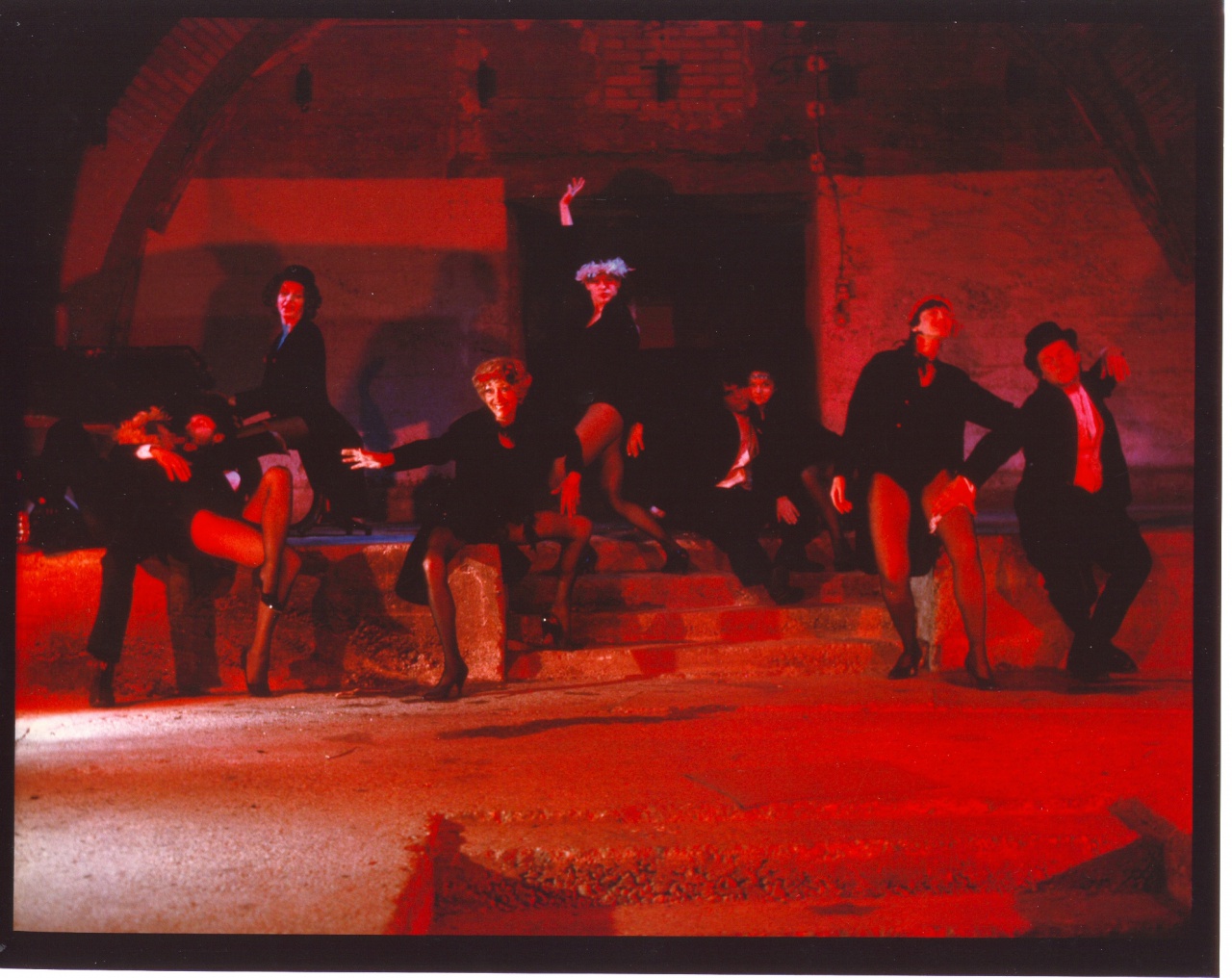 Theatre performance Missa in a minor, directed by Ljubiša Ristić, Mladinsko Theatre, 1980
The cult production Missa in a minor directed by Ljubiša Ristić at the Mladinsko Theatre, 1980.
Theatre performance Missa in a minor, directed by Ljubiša Ristić, Mladinsko Theatre, 1980
The cult production Missa in a minor directed by Ljubiša Ristić at the Mladinsko Theatre, 1980.
Following the performance Pika Nogavička (adapted after A. Lindgren, 1973) and his milestone performance Victims of the Bum-Bum Fashion (Žrtve mode bum-bum, 1975) that was not addressing the literally young audience, Jovanović achieved the renaming of the Mladinsko into the Slovenian Mladinsko Theatre (in 1978) and thus took its formal status higher. Due to Jovanović's links to Yugoslavia, the artistic achievements of Mladinsko attracted the attention of the progressive BITEF festival in Belgrade where Slovenian theatre became a regular guest.
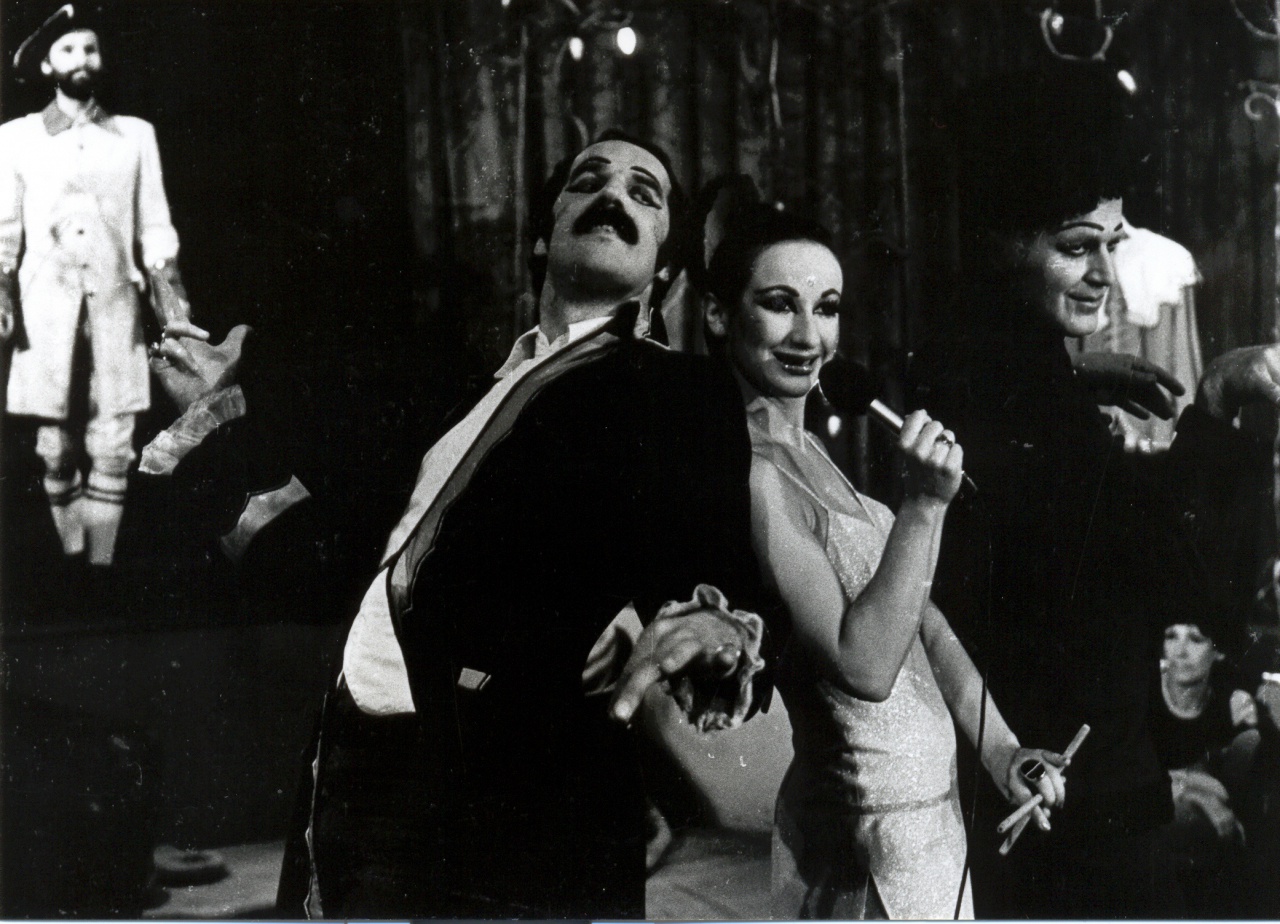 Victims of the Bang Bang Fashion, directed by Dušan Jovanović (playwright & director), 1975. Foto arhiv SMG
Victims of the Bang Bang Fashion, directed by Dušan Jovanović (playwright & director), 1975. Foto arhiv SMG
Soon, Vito Taufer (b. 1959) and Tomaž Pandur (1963–2016), both representatives of the next generation of directors, introduced next propulsive shifts in the sector. Taufer's Alice in Wonderland (1986) and Pandur's Scherezade (Šeherezada, 1989) after the text by I. Svetina opened the international nature of Slovenian theatre aesthetics to the South-American festivals (Columbia, Mexico). Pandur took over the SNT Maribor (years 1989–1996) and considerably radically changed the theatre aesthetics in Maribor, among others, with his own directions at the SNT Maribor (Hamlet, Faust, Carmen, three parts of La Divina Commedia, Russian Mission, Babylon). With his sister, the dramaturg and producer Livia Pandur (b. 1959), they later established Pandur.Theaters (in 2002) and directed in Germany, Spain and Slovenia.
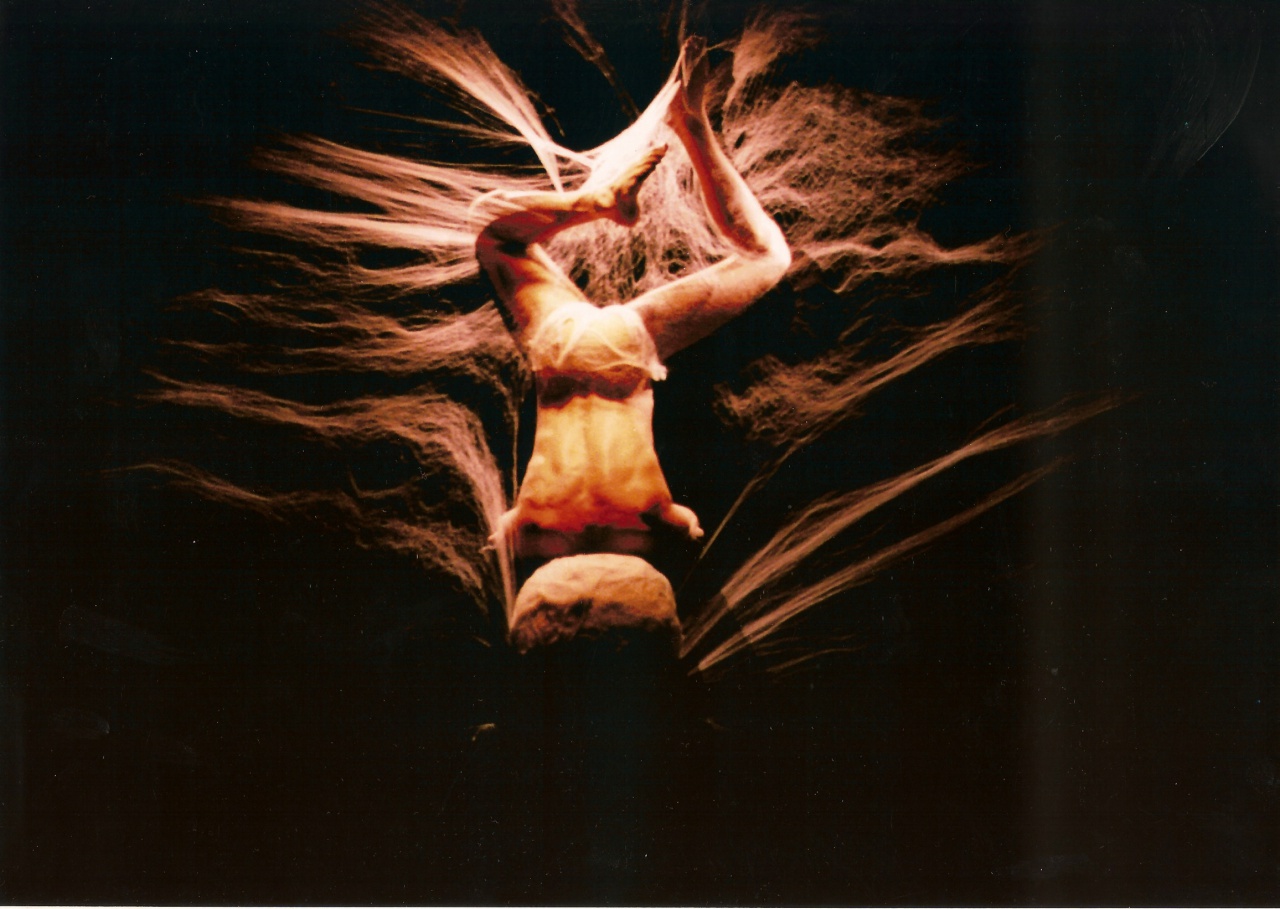 Silence Silence Silence by Vito Taufer, Mladinsko Theatre, 1996
Mladinsko Theatre's 1996 production Silence Silence Silence, directed by Vito Taufer, toured extensively internationally.
Silence Silence Silence by Vito Taufer, Mladinsko Theatre, 1996
Mladinsko Theatre's 1996 production Silence Silence Silence, directed by Vito Taufer, toured extensively internationally.
The 1990s were heavily defined by Koreodrama led by the Slovenia-based Croatian choreographer and director Damir Zlatar Frey and his visions of classical national and foreign drama texts – put into an inevitable grotesque light. During Pandur's time in Maribor, Frey staged a significantly prolific, today classical performances of Dogodek v mestu Gogi (Event in the Town of Goga) by Slavko Grum and Žabe (Frogs) by Gregor Strniša, awarded with the two main Borštnik Awards in a row (1992, 1993).
Independent production: practices and strategies (1960–2000)
Slovenia, especially its capital Ljubljana, has a long tradition of independent cultural production dating back to the 1960s. In the early 1980s, a strong independent art movement developed, featuring completely new artistic concepts and ways of presentation, peaking in the mid-1980s when new conditions for the production and organisation of culture were established. Thus, the alternative art of the 1980s could also be seen as politically avant-garde in interpreting and manipulating ideological and artistic liberalism.
In 1986. the Cankarjev dom Culture and Congress Centre staged the anthology performance Krst pod Triglavom (The Baptism under Triglav) by director Dragan Živadinov and in this way hosted the Scipion Nasice Sisters Theatre, part of the Neue Slowenische Kunst movement. This cult performance initiated a strong conceptual, non-verbal and physical theatre movement. After the self-destruction of Scipion Nasice Sisters Theatre, Živadinov kept founding further "living forms" of his artistic presence. The work of Živadinov marks this period considerably and represents an incredible theatre export of Slovenia (though his scope was not in line and easily recognised by the official theatre norm).
His artistic interest ranged from early performative events in "secluded" venues to the staging of T. S. Eliot's Murder in the Cathedral which he took as a pretext to his own performative vision (Zenit – drama observatorium, Mladinsko Theatre, 1988), but soon evolved into the Noordung Cosmokinetic Cabinet. This brought the retro-garde actualisation of the ideas of the Slovenian space scientist Herman Potočnik Noordung (1892–1929 who developed the concept of satellites in his book The Problems of Space Travel in Berlin, 1929). Živadinov and his close collaborators centred on the post-gravitational art with the help of high-technology tools and the logic of suprematism and constructivism. In 1999, Gravitation Zero – Noordung Biomechanics was organised in zero gravity space (in the Russian cosmonaut training aircraft in the skies above Moscow).
A consistent conceptually-focused auteur approach, original forms of stage presentations and aesthetic innovations in the field of diction and motion were quite powerful and made important shifts in the cultural scene, both domestically and at the international level. At the end of the 1980s, the new names coming from the Academy of Theatre, Radio, Film and Television (UL AGRFT) also included Vlado Repnik, Bojan Jablanovec, Matjaž Berger, Marko Peljhan, Emil Hrvatin (renamed to Janez Janša in 2007), Barbara Novakovič. Most of them later established different forms of their own working spaces.
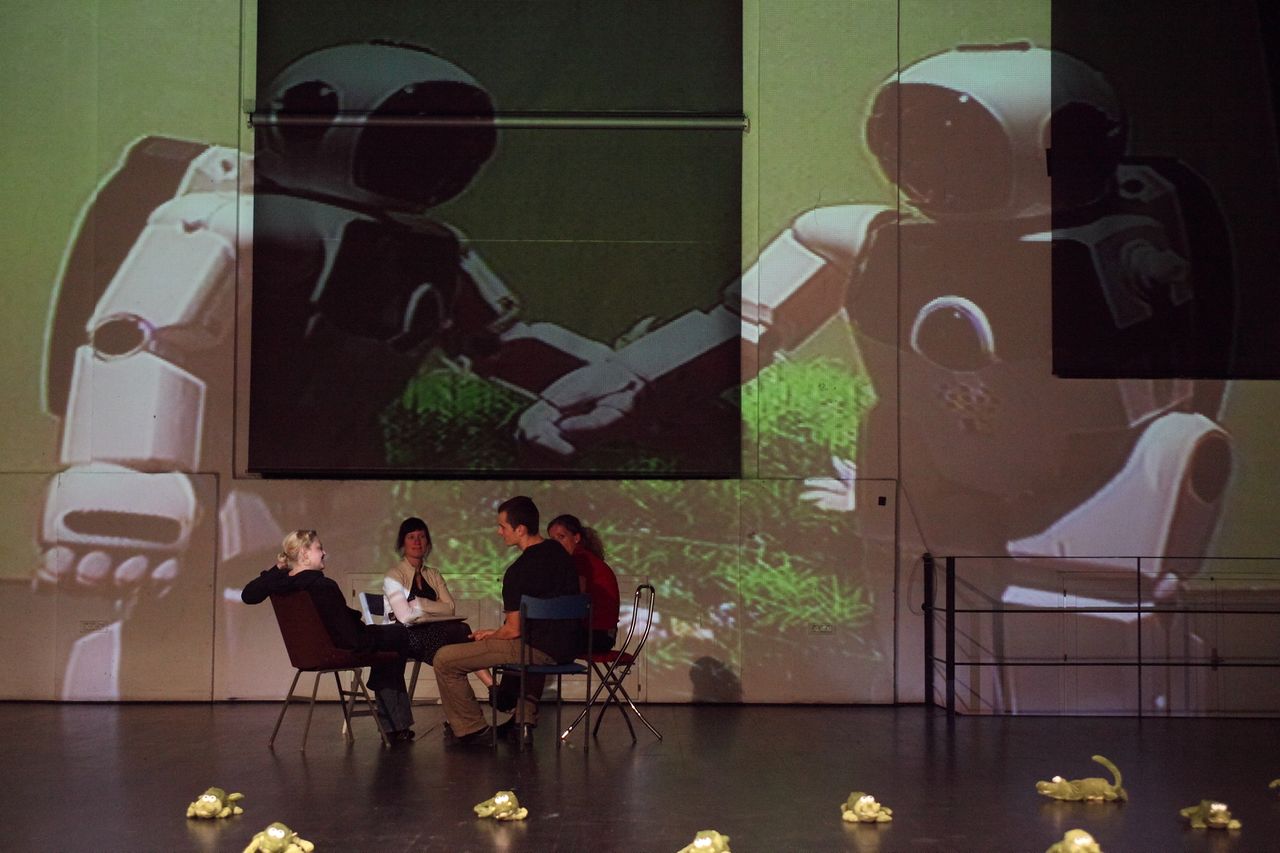 Theatre performance Evergreen by Vlado G. Repnik at Stara Elektrarna - Old Power Station in Ljubljana
Theatre performance Evergreen by Vlado G. Repnik at Stara Elektrarna - Old Power Station in Ljubljana
From the 1990s, performances of independent professional theatres began to feature physical theatre, owing mostly to the Slovenian physical theatre group Betontanc directed by Matjaž Pograjc (est. 1990) that devoted itself to researches of choreographical and physical forms of stage expression, employing ideologically-oriented themes – especially from the world of urban adolescence.
In the 1990s, the Slovene alternative cultural scene also underwent a drastic change with the emergence of a new generation of directors. Some (Sebastijan Horvat, Tomi Janežič) began introducing their new concepts directly into the institutional theatre repertoire, while others (Horvat's now-defunct EPI Centre (est. 1997), Vlado Repnik's GVR babaLAN Institute (est. 1992) worked through the independent sector. Until 1997, Bojan Jablanovec worked in drama theatre institutions, but established Via Negativa in 2002, which explores different performing strategies and is not affiliated with public institutions. Understanding theatre as a principle of communication rather than aestheticisation, Via Negativa spans its international cooperation throughout Europe.
Many non-institutional organisations extended the scope of their activities (including Maska Institute which expanded from publishing to production activities), while others began to breach art-form boundaries. For example, the Muzeum Institute began producing performing arts works by architects, visual artists and theorists, while Projekt Atol Institute and others focused on visual installation, intermedia and sound projects.
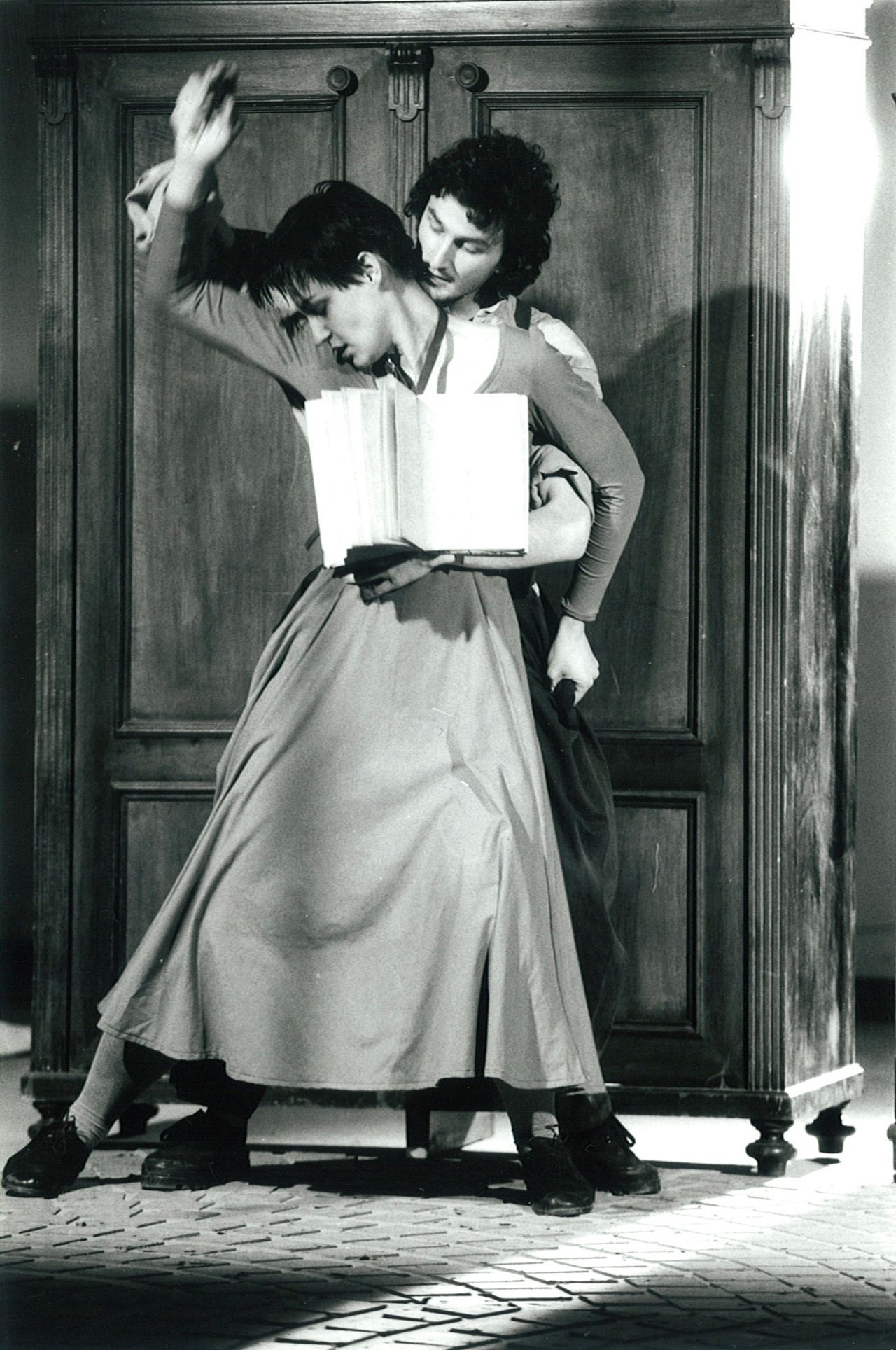 Cricket in the Fist by Muzeum Theatre, staged at the VIBA Studio, St. Joseph's Church, 1994. Barbara Novakovič and Ivan Peternelj as protagonists and founders of the Muzeum Theatre.
Cricket in the Fist by Muzeum Theatre, staged at the VIBA Studio, St. Joseph's Church, 1994. Barbara Novakovič and Ivan Peternelj as protagonists and founders of the Muzeum Theatre.
CONA Institute (est. 2007) first engulfed an ongoing series of engaged urban artistic projects related to migration issues (when Cona coproduced the web-based project series Ballettikka Internettikka with the Intima Virtual Base Institute) and now merges different fields of creativity, mainly classified in multimedia and musical arts, encouraging and producing education activities.
21st-century Slovenian theatre (2000–2020)
From the end of the 1990s, the leading lights of the productions in public theatre institutions who also proved their presence with numerous national and foreign awards include Jernej Lorenci (b. 1973) and Tomi Janežič (b. 1972), the latter who also worked in Norway and Russia. The acclaimed and regularly-awarded director Mateja Koležnik (b. 1962) entered the German theatre hemisphere (after 2018) and is now permanently active there. Other internationally active directors include Vito Taufer, Eduard Miler and Sebastijan Horvat all often directing in Croatia, while Matjaž Pograjc's group Betontanc performed extensively around the world.
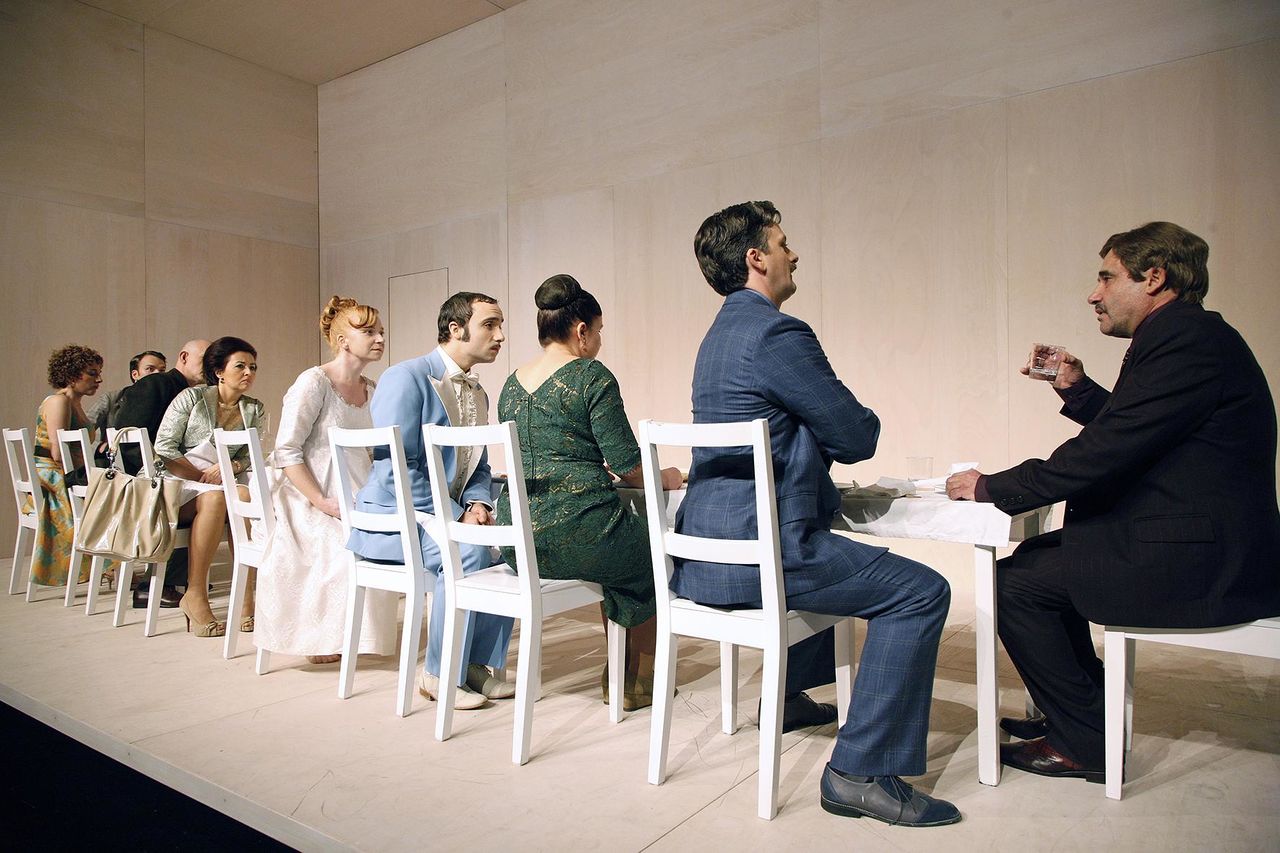 Brecht's A Respectable Wedding, directed by Mateja Koležnik, Maribor Theatre Festival, 2010.
Brecht's A Respectable Wedding, directed by Mateja Koležnik, Maribor Theatre Festival, 2010.
In the 1990s, Matjaž Berger evolved his aesthetics, tightly interwoven with philosophical authors, at the Mladinsko Theatre (e. g. The Name of the Rose, after Umberto Eco, 2002) that he artistically led (2003–2006). After, he took over the newly-established Anton Podbevšek Theatre in Novo mesto (taking its name from the main avant-garde poet of the so-called Modern movement in Novo mesto in the 1920s).
The younger generation is represented by Nina Rajić Kranjac (b. 1991) and Žiga Divjak (b. 1992) who both work in public theatre institutions, while the theatre collective Beton Ltd. is produced by the independent institution Bunker. A significant trait of their work is their preoccupation with current state of living and the socio-political interconnections that tackle their generational sensitivity.
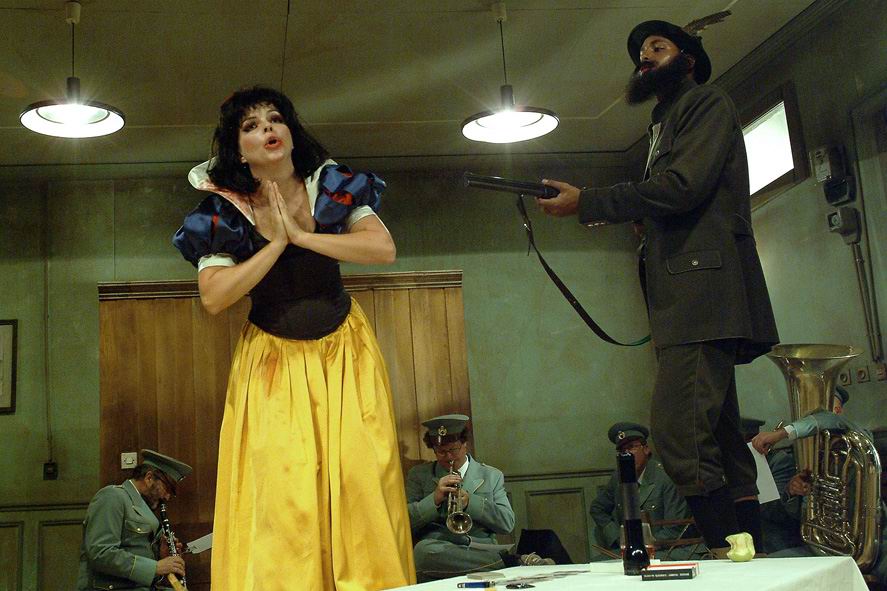 Elfriede Jelinek's Prinzesinnendramen (Der Tod und das Mädchen I-III) directed by Ivica Buljan, Prešeren Theatre Kranj, 2005
Ivica Buljan works with many Slovenian theatres, including Prešeren Theatre Kranj, where he directed Elfriede Jelinek's Prinzesinnendramen (Der Tod und das Mädchen I-III) in 2005. Photo: Mojca Partljič.
Elfriede Jelinek's Prinzesinnendramen (Der Tod und das Mädchen I-III) directed by Ivica Buljan, Prešeren Theatre Kranj, 2005
Ivica Buljan works with many Slovenian theatres, including Prešeren Theatre Kranj, where he directed Elfriede Jelinek's Prinzesinnendramen (Der Tod und das Mädchen I-III) in 2005. Photo: Mojca Partljič.
Regular directors in Slovenia from abroad include Ivica Buljan, Janusz Kica, Oliver Frljić. The latter was a guest of a number of foreign festivals with Damned be the Traitor of his Homeland! (Mladinsko Theatre, 2015), which deals with the pathologies of the contemporary Slovenian society.
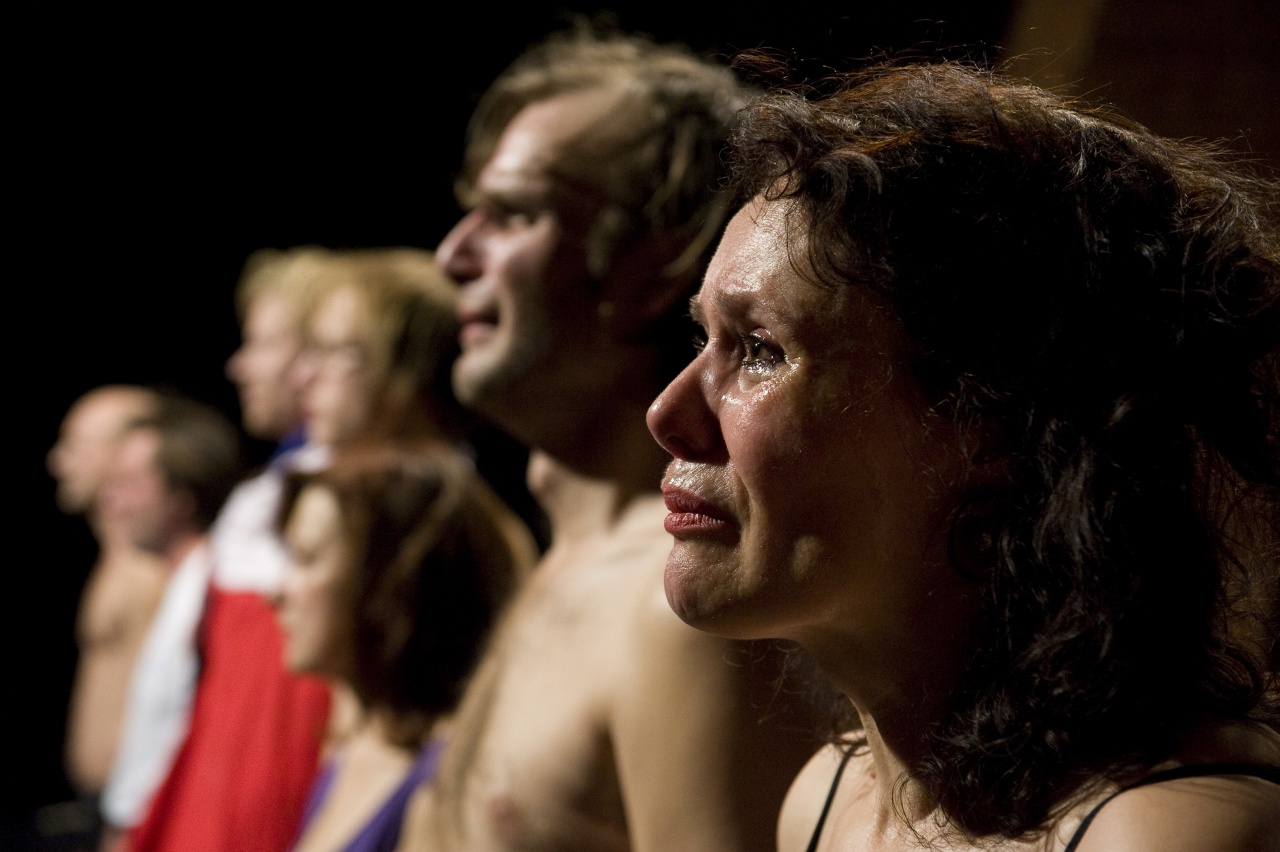 Theatre performance Damned be the Traitor of his Homeland! by Oliver Frljić, Mladinsko Theatre, 2010
Theatre performance Damned be the Traitor of his Homeland! by Oliver Frljić, Mladinsko Theatre, 2010
Theatre has been shaping Slovenia's image abroad, with several successful guest appearances and individual artists gaining international acclaim. Special mention among female directors goes to Tijana Zinajić (b. 1973) or Ivana Djilas (b. 1976) who both grew out of the Yugoslav context.
 Ulrike Syha's Private Life directed by Ivana Djilas and awarded at the Maribor Theatre Festival, 2010.
Ulrike Syha's Private Life directed by Ivana Djilas and awarded at the Maribor Theatre Festival, 2010. Photo: Peter Uhan.
Ulrike Syha's Private Life directed by Ivana Djilas and awarded at the Maribor Theatre Festival, 2010.
Ulrike Syha's Private Life directed by Ivana Djilas and awarded at the Maribor Theatre Festival, 2010. Photo: Peter Uhan.
Funding for Slovenian theatre
Within a population of just under two million, Slovene attendance at theatre productions amounts to around one million sold tickets a year.
In the beginning of the 21st century, the synergic cooperation of the institutional and the non-institutional sectors tried to build a spontaneous pattern of cultural activities. The sectors are interrelated in many ways: some professionals working at theatre and ballet houses also take part in independent stage productions, and institutional premises are used from time to time by independent cultural organisations. Nevertheless, the two sectors differ heavily where funding is concerned. The regularity of support from the Ministry of Culture that ensures continuity and working conditions, the support for NGO cultural programmes and running costs, varies and is dependent on the affinities and cultural awareness of the changing political situation. Another stable principal funder, the Municipality of Ljubljana, has applied the same type of grant scheme. Cultural centres outside of Ljubljana (kulturni domovi) receive grants and support by the regional JSKD branches.
Criticism, reflection and research
The Association of Theatre Critics and Researchers of Slovenia (DGKTS, est. 1976), a member of the International Association of Theatre Critics (IATC/AICT), was revitalised and reorganised in September 2008. As a guild association, it keeps an eye on the professional status of theatre criticism and scrutinises practical and theoretical reflection of theatre in Slovenia. The members (professional theatre critics, theatre researchers and dramaturgs of all generations) participate in international debates and symposia, its younger members take part in the IAICT young critics' seminars. The association regularly holds round tables as an accompanying programme of the Maribor Theatre Festival and Week of Slovenian Drama, in order to catalyse reflection in the fields which have not been dealt with in Slovenia and to contribute to the recognition of theoretical and critical theatre discourse. It also bestows an award for the best performance of the theatre season at the Maribor Theatre Festival and, since 2016, also the Vladimir Kralj Award.
The interdisciplinary research group at the Academy of Theatre, Film, Radio and Television (UL AGRFT) is also active in theatre research, contributing to the field through academic articles published internationally (FIRT, Theatre Research International, STEP Group), as well as in the Slovenian journals Amfiteater, Maska and occasionally also Dialogi or in the MGL Library Book Collection. The group also regularly co-organises symposia.
Repertory theatre
There are 13 national drama theatres with their own ensembles. The three theatre houses, Slovenian National Theatre Drama Ljubljana and the Slovene National Theatre Drama Maribor (both est. 1945) and Slovene National Theatre Nova Gorica (est. 1969 as Primorsko dramsko gledališče, having gained its “national” status in 2013), represent the core state-supported performing arts infrastructure.
The Slovenian National Theatre Opera and Ballet Ljubljana resides in the new house that was built as an extension to the old building of Deželno gledališče (1892; architects Jan Vladimir Hrasky and Anton Hruby) and was opened in 2011 (architects Jurij Kobe and Marjan Zupanc). Opera and Ballet Theatre in Maribor operate as a part of the Slovene National Theatre Drama Maribor – their common domain was built in 1852.
There are another nine public professional theatres in Slovenia: the Ljubljana Puppet Theatre (est. 1948), the Ljubljana City Theatre (est. 1949), the Prešeren Theatre Kranj (est. 1949), the Slovene People's Theatre Celje (est. 1950), the Slovenian Youth Theatre – the Mladinsko Theatre (est. 1955), the Koper Theatre (est. 1955), the Ptuj City Theatre (est. 1956), the Maribor Puppet Theatre (est. 1973), Slovene Permanent Theatre in Trieste/Teatro stabile sloveno Trieste (since 1977; est. as the Slovene National Theatre Trst in 1945), as well as Anton Podbevšek Theatre in Novo mesto (est. 2006). Most of these theatres are financed by the national budget, while four (Prešeren Theatre Kranj, Ptuj Theatre, Koper Theatre, Anton Podbevšek Theatre Novo mesto) are financed by the budgets of their respective local municipalities.
Apart from receiving domestic tours, theatre houses regularly host international productions (mostly within festival programmes or as institutional or group presentations) as well as occasionally lend their stages for independent artists' productions.
The theatre festival landscape
The first theatre festival in Slovenia was established by Lojze Filipič in Celje Theatre in 1955 under the name The first festival of Slovene and Yugoslav contemporary drama (as a direct precursor for the Yugoslav theatre festival in Novi Sad in 1956). The festival was moved to Maribor in 1966 and renamed the Borštnikovo srečanje. Today, this central Slovenian theatre festival operates internationally as the Maribor Theatre Festival and attracts many foreign selectors and professionals.
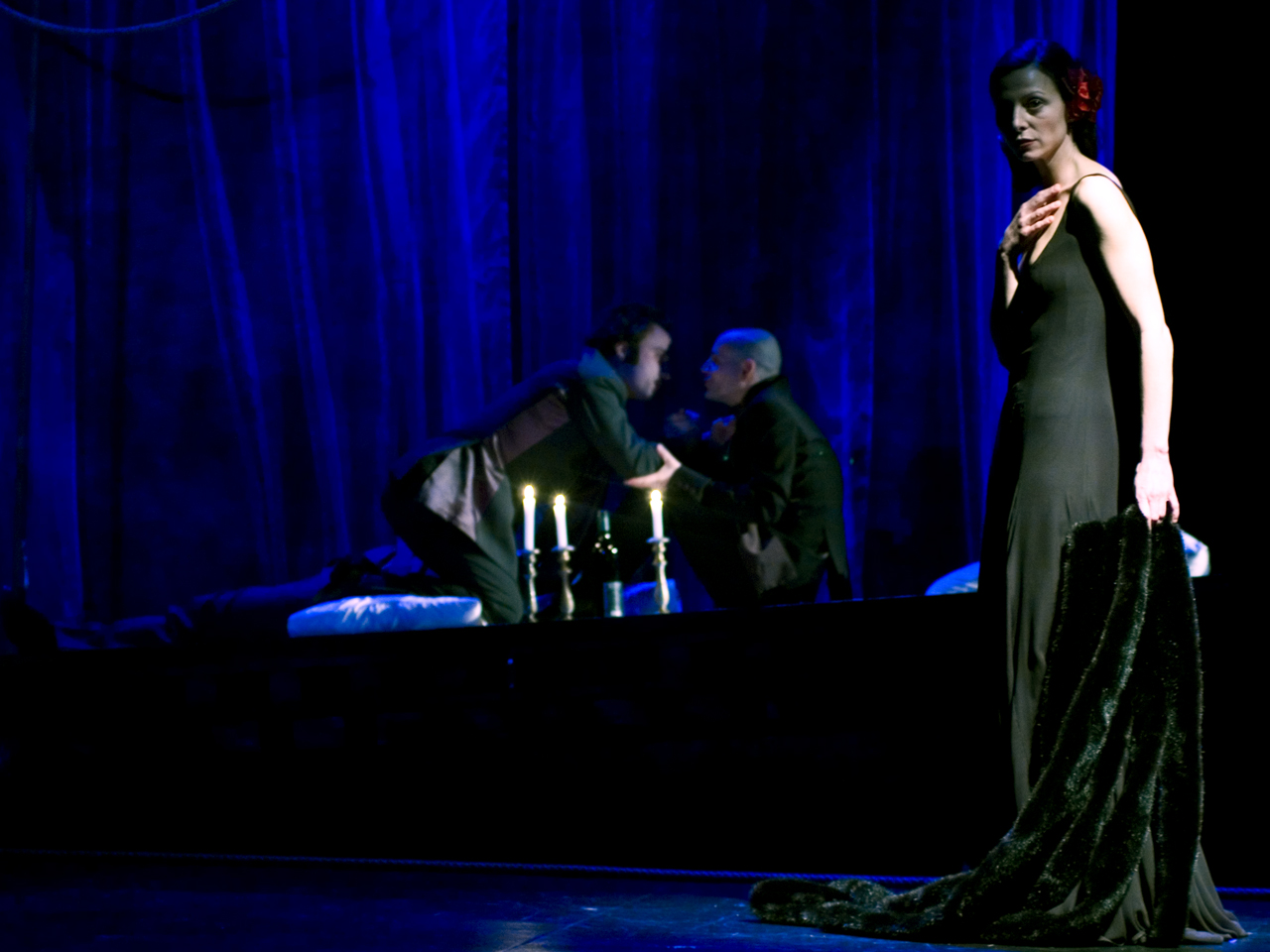 Ivan Cankar's Lepa Vida directed by Sebastijan Horvat, Maribor Theatre Festival, 2008.
Ivan Cankar's Lepa Vida directed by Sebastijan Horvat, Maribor Theatre Festival, 2008. Photo: Petra Štrukelj
Ivan Cankar's Lepa Vida directed by Sebastijan Horvat, Maribor Theatre Festival, 2008.
Ivan Cankar's Lepa Vida directed by Sebastijan Horvat, Maribor Theatre Festival, 2008. Photo: Petra Štrukelj
In 2020, the Week of Slovenian Drama in Kranj celebrated 50 years of encouraging the development, creation, publishing, translating of original Slovenian drama works. The festival presents productions of Slovenian playwrights and even includes foreign productions of Slovenian playwrights in translation. The Slovene People's Theatre Celje annually prepares the Days of Comedy (Dnevi komedije, est. 1992).
In 1995, the Exodos International Festival of Contemporary Performing Arts was established in Ljubljana as the first international festival of performing arts to be organised in independent Slovenia, a review of prominent and influential contemporary theatre phenomena from Slovenia and abroad. The presentation and promotion of foreign cultures, the openness to international artistic impulses enabled the further development of the Slovenian performing strategies and (in)directly permeated and shaped their artistic achievements – the signs of that are easily recognisable. The presented foreign artists who were intertwined with Slovenian authors in each year's programme, were essentially the top names from Belgium, Portugal, Canada, Scandinavia, Colombia, the UK, Croatia and elsewhere whose work shaped and defined this field in this time.
Cankarjev dom became a significant venue for the presentation of prominent international theatre and contemporary dance phenomena starting in 1996. In its programme, it successfully surpassed the separation between mainstream and avant-garde by joining them. The performing arts programme under the lead of Uršula Cetinski (who worked in the frame of Koreodrama in the past) was upgraded through the autonomous reacting and evolving of current trends in the contemporary performing arts scene (two editions of The Beauty of Extreme festival that introduced the principal names of the body art scene; a long list of prominent authors as Societas Raffaello Sanzio or Needcompany followed, to name only two).
In 1998, a strong international festival tradition of Mladi levi (Young Lions) was established: an annual festival of contemporary theatre and dance, initiated under the auspices of the international network Junge Hunde. Organised by the Bunker Institute, it takes place at the Old Power Station every August. It focuses on talented and emerging stage performers, along with presenting already established progressive authors. The festival invites artists to stay in Ljubljana for its entire length, tries to create circumstances where artists and audiences can meet, exchange experiences, to plan future collaborations.
In its early years, Mladi levi utilised various venues across Ljubljana, among them, the Railway Museum of Slovenia and Tovarna Rog, thus presenting new contemporary productions in juxtaposition with historical heritage.
Other theatre festivals take place as well. In 2007, the Mladinsko Theatre set up a festival overview of its annual production, called Prelet (Overflight), later renaming it as the Mladinsko Showcase. This distinctively international project, with English-surtitled performances, reiterates the highlights of the Mladinsko (and for a time also of the Glej Theatre) from the previous season. Since the 2017/18 season, the showcase is organised by the Mladinsko alone and focuses on the theatre's own productions as well as those produced in collaboration with Maska Institute at The New Post Office. A similar approach was adopted in 2014 by the Slovene National Theatre Drama Ljubljana: the Drama Festival showcases performances by some of the best European and Slovenian directors working in the European arena. The programme comprises selected productions of Slovenian theatre houses and intriguing performances by international theatres, thus far mainly from the wider region.
For the list of currently occurring festivals see Category:.
The Week of Slovenian Drama and Slovenian playwriting
When the Week of Slovenian Drama (est. 1971) in 1979 introduced the annual award for best drama play, this act brought forward a series of inspiring Slovenian playwrights. In the 1980s and 90s, the most actively performed drama authors were Dane Zajc (Voranc, dir. Mile Korun, 1980); Dušan Jovanović (Liberation of Skopje, 1981, dir. Ljubiša Georgievski; The Wall, the Lake, dir. by the author himself, 1989; Antigone, dir. Meta Hočevar, 1993); Rudi Šeligo (The Wedding, 1981; Ana, 1984, both dir. D. Jovanović), Drago Jančar (Dissident Arnož and his People, 1982, The Great Brilliant Waltz, 1985, both dir. Zvone Šedlbauer; Stakeout at Godot's, dir. Marko Sosič, 1989); Dominik Smole (Little Gold Shoes, 1983, dir. M. Korun, 1983); Tone Partljič (My Dad, the Socialist Kulak, dir. Matija Logar, 1983); Ivo Svetina (The Gardens and the Dove, dir. Tomaž Pandur, 1996; Thus Died Zarathustra, dir. Janez Pipan, 1997); Evald Flisar (What About Leonardo? , dir. Dušan Mlakar, 1992); Matjaž Zupančič (Vladimir, 1999; The Corridor, 2004, both dir. by the author himself).
The author whose works were surpassed by the award lines but effectively in a unique ludistic manner detected and captured the growing schizoid Slovenian state in the disintegrating Yugoslav reality was Emil Filipčič (Ujetniki svobode, dir. Janez Pipan, 1982; Atlantida, 1988, or The Divine Comedy, both dir. Vito Taufer).
The aforementioned repertory theatres create productions that are usually text-based, featuring international and Slovenian classics (A. T. Linhart, Ivan Cankar, Slavko Grum, Dominik Smole, Gregor Strniša). In the late 20th and early 21st century, we began to see the impact of the Week of Slovenian Drama in Kranj and its significant trace on Slovenian theatre production. Works by contemporary writers stepped into the foreground and were presented in various theatres: Simona Semenič (5boys.si, dir. Jure Novak, 2010); [[Matjaž Zupančič (The Class, dir. M. Korun, 2006); Vinko Möderndorfer (Exercises in Anxiety, dir. Jaka Andrej Vojevec, 2012); [[Rok Vilčnik (The Sakeshvili Democratic People's Circus, dir. Luka Martin Škof, 2017); Draga Potočnjak (For Our Young Ladies, dir. Tijana Zinajić, 2008); Ivo Prijatelj (Totenbirt, dir. M. Korun, 2010), etc.
Theatre traces – the performances most remembered
Next to the already mentioned theatre performances and award-winning works, the list below puts attention on the repertory and independent performances that defined the last two decades of the 20th century and left a distinct trace, either by their unique drama content, directorial vision, fresh perspective on Slovenian classics, outstanding acting contributions, performative environment, etc.
Memorable performances and author projects of the 1980s and 1990s up to 2001, the most vital time of Slovenian theatre creativity, include:
Missa in a-minor (director Ljubiša Ristić, 1980); Friedrich Schiller's Kaballe und Liebe (dir. Dušan Jovanović, 1980); Nigel Williams's Class Enemy (dir. Vito Taufer, 1982), Emil Filipčič's Prisoners of Freedom (dir. Janez Pipan, 1982), I am not I (dir. Vito Taufer, 1983), Romeo and Juliet – Commentaries (dir. L. Ristić, 1983); Herbert Achternbusch's Ela (dir. Eduard Miler, 1983); Martin Sherman's Bent (dir. Vinko Möderndorfer, 1983); Hinkemann (dir. Dragan Živadinov, 1984); Rudi Šeligo's Ana (dir. D. Jovanović, 1984); Heiner Mȕller's Quartett (dir. E. Miler, 1984); Fear and Courage, after Edvard Kocbek (dir. J. Pipan, 1984); Emil Filipčič's Altamira (dir. V. Taufer, 1984); Marija Nablocka (dir. D. Živadinov, 1985); Brecht's Kleinbȕrgerhochzeit (dir. Eduard Miler, 1985); Peter Weiss' Nacht der Gäste (dir. V. Taufer, 1985); Baptism under Triglav (dir. D. Živadinov, 1986); Fyodor M. Dostoyevsky/D. Jovanović's The possessed (dir. D. Jovanović, 1986); Alice in Wonderland after L. Carrol (dir. V. Taufer, 1986); Ivan Tavčar/Peter Božič's Agata Schwarzkobler (dir. Damir Zlatar Frey, 1986); Drama Observatorium Zenit (dir. D. Živadinov, 1988); E. Filipčič's Atlantida (dir. V. Taufer, 1988); I. Svetina's Scheherezade (dir. Tomaž Pandur, 1989); Jean Genet's The Maids (dir. D. Z. Frey, 1989); J. W. Goethe's Faust (dir. T. Pandur, 1990); Brigades of Beauty (dir. Vlado Repnik, 1990); Veno Taufer's Odysseus and Son (dir. V. Taufer, 1990), Shakespeare's Hamlet (dir. T. Pandur, 1990), Scandal after Cankar (dir. Martin Kušej, 1991); Ibsen's Peer Gynt (dir. Slobodan Unkovski, 1991), Slavko Grum's An Event in the Town of Goga (dir. D. Z. Frey, 1991); Shakespeare's Timon of Athens (dir. V. Taufer, 1992); They're Coming, after E. Ionesco (dir. D. Z. Frey, 1992); Carmen (dir. T. Pandur, 1992); Molière's Don Juan (dir. Paolo Magelli, 1992), Gregor Strniša's Unicorn (dir. Meta Hočevar, 1992); Hamlett Packard (dir. Tomaž Štrucl, 1992), Shakespeare's King Lear (dir. D. Jovanović, 1992), Woody Allen's Play it again, Sam (dir. Boris Cavazza, 1992), Gregor Strniša's Frogs (dir. D. Z. Frey, 1993); H. Achternbusch's Susn (dir. E. Miler, 1993); Dante's La Divina Commedia (dir. T. Pandur, 1993); August Strindberg's Miss Julie (dir. E. Miler, 1994); Bernard-Marie Koltès' Roberto Zucco (dir. Matjaž Pograjc, 1994); Cricket in the Fist (dir. Barbara Novakovič, 1994); Hamlet (dir. J. Pipan, 1994), Family Album after H. Ibsen (dir. M. Hočevar, 1994), Grmače by Dane Zajc (dir. Mile Korun, 1994); Russian Mission (dir. T. Pandur, 1994); Gertrude Stein (dir. V. Repnik, 1994); Beautiful Vida, after I. Cankar (dir. D. Z. Frey, 1995); Thomas Bernhard's Vor dem Ruhestand (dir. M. Korun, 1995); F. Kafka's Amerika (dir. Janusz Kica, 1995); Howard Barker's The Love of a Good Man (dir. Bojan Jablanovec, 1995); Tom Stoppard's Arcadia (dir. J. Pipan, 1995); Lo Scrittore (dir. B. Novakovič, 1995); Ionesco's La Cantatrice Chauve (dir. V. Taufer, 1995); Chekhov's Three Sisters (dir. M. Hočevar, 1995); I. Svetina's Babylon (dir. T. Pandur, 1996); Israel Horovitz's The Indian Wants the Bronx (dir. Mateja Koležnik, 1996); Philoktetes by Euripides (dir. P. Magelli, 1996); Silence Silence Silence (dir. V. Taufer, 1996); Ivan Mrak's Escape from Hell (dir. D. Z. Frey, 1996); Philip Ridley's The Pitchfork Disney (dir. B. Jablanovec, 1996); Peter Handke's Die Stunde da wir nichts voneinander wußten (dir. Ernst M. Binder, 1996); Osborne's Look Back in Anger (dir. J. Pipan, 1996), Yukio Mishima's Das Besuch (dir. M. Hočevar, 1997); Shakespeare's Taming of the Shrew (dir. J. Kica, 1997); Who sings Sysiphus? (dir. D. Jovanović, 1997); You never see me where I see you (dir. Matjaž Berger, 1997); Werner Schwab's Die Präsidentinnen (dir. B. Jablanovec, 1997); Sophocles's King Oedipus (dir. Tomi Janežič, 1998); Heiner Müller's Der Auftrag (dir. E. Miler, 1998); Yasmina Reza's Art (dir. Žarko Petan, 1998); The Girl and a Doublebass (dir. B. Novakovič, 1998); Astrid Lindgren's Pika (dir. V. Taufer, 1998); Calderon's La Vida es Sueño (dir. J. Kica, 1998); Samuel Beckett's La fin de partie (dir. V. Taufer, 1998); Brecht's Baal (dir. E. Miler, 1998); Sophocles's King Oedipus (dir. Tomi Janežič, 1998); Ion (dir. Sebastijan Horvat, 1998); To play, after G. Stein (dir. D. Z. Frey, 1998); A. T. Linhart's The Happy Day or Matiček is getting married (dir. V. Taufer, 1999); Ionesco's Makbet (dir. S. Horvat, 1999); A. P. Chekhov's Utva (dir. T. Janežič, 1999); Andrej Rozman Roza's take on Shakespeare's A Midsummer Night's Dream (dir. V. Taufer, 1999); Irvine Welsh's Trainspotting (dir. E. M. Binder, 1999); The Idiot by Dostoyevsky (dir. M. Korun, 1999); Die Traumdeutung (dir. M. Berger, 1999); Martin McDonagh's The Beauty Queen of Leenane (dir. M. Koležnik, 1999); SS – Sharpen your senses, after G. Stein (dir. S. Horvat, 1999); Molière's Le Misanthrope (dir. S. Unkovski, 2000); Beckett's En attendant Godot (dir. D. Jovanović, 2000); Three Products Noordung (dir. D. Živadinov, 2000); H. Barker's Ursula (dir. J. Pipan, 2000); David Harrower's Knives in Hens (dir. M. Koležnik, 2001); Connor McPherson's The Weir (dir. M. Korun, 2001); T. Bernhard's Ritter, Dene, Voss (dir. Dušan Mlakar, 2001); Sarah Kane's Cleansed (dir. Jernej Lorenci, 2001).
Non-professional and amateur theatre
Youth theatre has developed mainly under the umbrella of grammar school theatre groups. Today there are over 170 amateur theatre groups which seek to stimulate interest, discover talent and educate future professionals at an early age across the entire country. These amateur theatre groups are funded by the Public Fund for Cultural Activities of the Republic of Slovenia (JSKD), which has branch offices around Slovenia and organises workshops and festivals. Domestic touring by non-professional theatre companies is organised individually and on a fairly small scale.
The propulsiveness of individual culture centres (kulturni dom) in various smaller cities/towns without a permanent professional theatre institution varies depending on the attributed leading persons. Particularly successful and even internationally active is the Miran Jarc Cultural Association Škocjan near Domžale (active since 1963, with a newly open domain from 2020) whose members annually prepare the open-air Studenec Cultural Summer Festival in which theatre and musical performances intertwine: a domestic theatre play is presented as the central event and is joined by numerous guest appearances: from the Ljubljana Opera, contemporary musicians to theatre performances. The association is also active in the winter, for several decades it has been preparing the Miklavževanje, which takes place in the Domžale Sports Hall since 1991.
Tone Čufar Theatre in Jesenice (est. 1945) whose regular repertoire is aimed at adult and young audience and includes a number of professional artists as mentors or directors (at the time being Vid Klemenc, Gaber Trseglav, Gregor Čušin, Iztok Valič, Gojmir Lešnjak Gojc, Klemen Janežič, Rok Andres) and prepares Čufar Days (est. 1988), the annual festival of amateur theatre groups from all over Slovenia (as well as from the ones living in neighbouring countries).
KUD Transformator is the domain of Jaka Andrej Vojevec who after his directions in the institutions decided for a move into the collective and less formalised method of performative activities with young enthusiasts. In collaboration with Barbara Polajnar, they follow Augusto Boal's concept of the “theatre of the oppressed” as the engaged possibility for a social change. KUD Transformator also collaborates with the ZIZ group (transl. TIT group) from Maribor that prepares the annual ZIZ festival (Jaša Jenull, Urša Adamič take part as well).
A strong platform of internationally acknowledged amateur and community choirs with a long tradition also persists in this frame, their activities supported primarily by the JSKD.
Performing arts training // theatre and dance education
Studies of theatre, film and broadcasting are offered by the Academy of Theatre, Radio, Film and Television (AGRFT: founded in 1946). It provides studies for actors, directors, dramaturgs, scenographers and costume designers. It includes the study programmes for playwriting, screenwriting and production, dance and stage language, as well as programmes for film and TV shooting and editing (professions of cameraman and editor), the post-graduate programmes of the art of movement and speech forms.
Ana Monró Theatre runs an international training programme and symposium on street theatre within the Ana Desetnica International Street Theatre Festival.
Theatre archives and documentation in the 20th century
The National Theatre Museum of Slovenia was established on 29 November 1952. The principal aim of its first director Janko Traven was the systematic collecting and preservation of as yet incidental gathering of vast historical materials by singular theatres and private collectors. The ambition of Traven was upgraded by his successor Dušan Moravec (from 1962) who added publishing of the first theatre studies periodic collection Dokumenti with various documents and articles on Slovenian theatre history to the collecting of materials. Also, the National Theatre Museum of Slovenia published the Repertory of Slovenian Theatres 1867–1967, at the centenary of the establishment of Dramatic Society. After the period 1978–1996, the theatre museum was merged with the film museum department and was renamed fort his short time. Meanwhile, in 1990 the museum moved to Mestni trg 17, into the building where France Prešeren resided for a short time, and it still resides there. In 1994, the Repertory was renamed into Slovenian Theatre Yearbook (Slovenski gledališki letopis) and has since then been published annually – as a continuation of the national theatre studies, it includes information about the performances of the Slovenian institutional and non-institutional theatres (it is also available in an interactive form via e-portal sigledal.org). In the period 1998–2014 the theatre museum was led by Ivo Svetina.
In 2014, the National Theatre Museum of Slovenia was – after the initiative of DGKTS and the consensual striving of Ivo Svetina – prequalified into the Slovenian Theatre Institute (SLOGI) as the legal successor of the museum that has become the constituent part of the Institute. Next to the previous activities of the museum (collecting, preserving, documenting, processing and presenting of the materials of importance for the Slovenian theatre history and the Slovenian cultural heritage), SLOGI predominantly focuses on introducing pedagogical programmes for younger audience (also as the national coordinator of the Golden Stick platform), at the same time retaining its basic research activities (connected with publishing and presenting occasional symposia with the help of AGRFT). SLOGI also offers a stable exhibition Hoja za gledALiščem - Od jezuitov do Cankarja that spans the Slovenian theatre history from the Jesuits in the 16th century to the time of Ivan Cankar. The exhibit traces the first dramatic dialogue in Primož Trubar's Katekizem, the first Slovenian book (published 1550 in Tübingen).
Due to lack of space, SLOGI tends to present various thematic exhibitions in collaboration with other institutions (e. g. Hamlet in Slovenia, 2016, with Cankarjev dom).
The basic structure of the museum and its collections remains intact since Moravec. The Iconotheque, the Video Archive and Audio Collection, the Archive of Printed Documentation and the specialised Library of Slovenian Theatre Institute – Theatre Museum/SLOGI (the National Theatre Museum of Slovenia up until 2014) offer the largest museum collection of the Slovenian professional theatre (theatre programmes, flyers, posters, advertisements, scene set and costume designs, models, awards, death masks, photographs, artistic works). Of vital importance are the set and costume designs by Avgust Černigoj, the portraits of Božidar Jakac, Nikolaj Pirnat, and Miha Maleš, the depictions of Ivan Vavpotič, the theatre posters by Matjaž Vipotnik, the costume designs by Alenka Bartl, as well as the collected theatre oeuvres by the photographers Vlastja Simončič, Jendo Štoviček, Tone Stojko, if we name only a few examples.
The AV Archive offers recordings of theatre performances, radio plays, original soundtracks and sound effects of performances as well as interviews with theatre creators. The publishing activities of SLOGI still include the collection Documents (Dokumenti), only today it is structured differently and includes various monographs, oeuvres by theatre critics – as of 2020, the Dokumenti collection includes 101 titles. Also, SLOGI publishes Amfiteater, Journal of Performing Arts Theory (in collaboration with AGRFT), publishing scientific articles and thematic issues.
Other online resources for theatre include the portal of Slovenian theatre Sigledal.org.
Sources used in this overview include:
- Culture.si and Slovenia Cultural Profile (articles by Tim Doling, Helena Pivec, Katja Kosi)
- Sigledal.org
- Slogi.si
- World Scenography
- Amfiteater
- 50 years of Week of Slovenian Drama
- Drama
- 100 years of SNG Drama Maribor
Author bio
Primož Jesenko is a theatre historian and researcher at the Slovenian Theatre Institute (SLOGI). He is the author of the monograph Rob v središču: Izbrana poglavja o eksperimentalnem gledališču v Sloveniji 1955–1967 (The Edge in the Centre: Selected Chapters from the History of Experimental Theatre in Slovenia 1955–1967), SLOGI, 2015).


